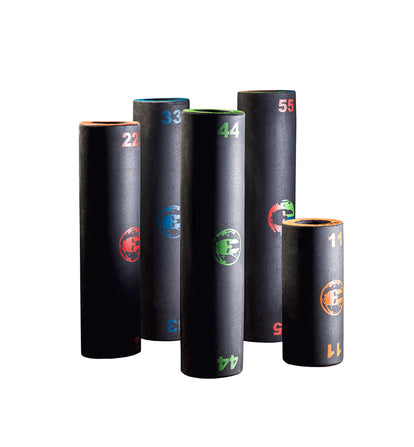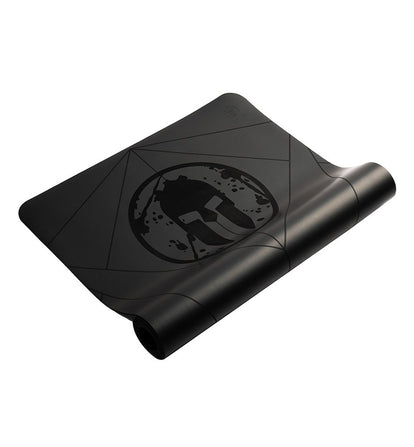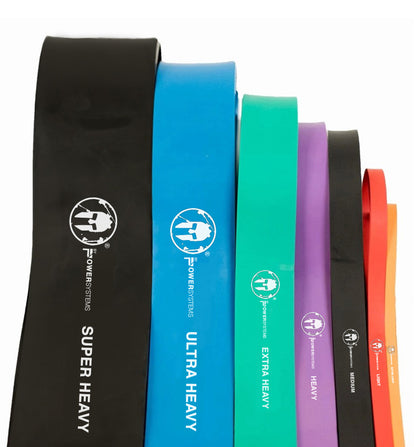Don't Be Dumb. Deal With Your Injuries BEFORE Your Race.

While the 2022 race season likely has you chomping at the bit to get your game face on, it’s actually the rest of your body you need to focus on first.
Because if you’ve been laid up with an injury (or even if you're just now returning to racing after a year of lockdowns), you need to deal with where your body is at physically before you toe the start line.
Racers are notorious for getting back in the game before injuries have fully healed, but as Spartan SGX Coach Joey Cadena, CEO of Physiosports Institute and a Medicine Corrective Exercise Specialist, says, this preemptive return can lead to further, and often more serious, injuries happening.
"So, the ‘big picture question’ to ask when recovering from an injury to return to racing is, ‘Are all of my joints moving optimally?’” he says.
Related: How to Think Yourself Through Any Injury
Cadena, who regularly works with Spartan racers (including Elites), notes that injured racers often jump too quickly to soft tissue therapies before checking out their joint movements and, as a result, “miss the tiny things that are actually causing the bigger problems."
"This could be something like when you’re running and your knee turns in a little bit too quickly, or when you’re climbing the monkey bars or rope, and your shoulder starts to pinch," Cadena says.
So what’s an eager post-injury racer to do? According to Cadena, paying attention to some of the smaller accessory muscles that assist larger muscles to work optimally could have you back on the course and bagging medals much quicker than if you had ignored the seemingly small-at-first issues.
So, let’s look at some of the most common injuries plaguing Spartan racers, the problems they may be missing, and the exercises you'll need to face down each of them and bounce back better.
What Are the Most Common Racing Injuries?
1. Iliotibial Band Syndrome (ITBS)
One of the main injuries that Cadena sees among his Spartan clients is IT band syndrome. This is usually described as a pestering pain experienced on the outer part of the knee. IT band syndrome is related to the iliotibial band, a large tendon that runs down the entire side of the quad and is attached to the outside of the knee.

“This giant tendon links to a tiny hip muscle called the tensor fascia latae (TFL),” Cadena says, “The job of that muscle is to flex your hip, rotate your hip internally, or to move your knee towards your centerline.”
But here’s the rub: thanks to our modern habit of sitting on our asses day in and day out, whether we’re working at our desks, driving our cars, or sitting on the bus, our TFL is turned on most of the time.
“As a hip flexor, it’s turned on to keep your posture muscles upright while you’re sitting,” Cadena explains. “When you want to go for a run or race and you need to extend your hip, your hip extensor — primarily your gluteus medius — is off and the opposing muscle — your hip flexor — is on.
Related: The 4 Most Common Training Injuries — and How to Prevent Them
“So what happens is that the hip flexor tightens up and the gluteus medius can’t even out the force; This causes the knee to begin turning in slightly as you run.”
And because your knees are key to running, injuries can easily begin to occur when it’s out of alignment.
Cadena, who has helped hundreds of Spartan racers with this specific issue, (including six-time OCR World Champion, Hunter McIntyre) advises including exercises for the gluteus medius in your workouts.
Try These Exercises to Help With Iliotibial Band Syndrome:
— Lunges
— Weighted squats
— Side-lying abduction exercises
2. Shoulder Immobility
Our shoulder complex is made up of the scapula (shoulder blade), clavicle (collarbone), and the glenohumeral joint (ball and socket). And while they all work together to make your shoulder move, according to Cadena, more than 60% of the movement in our shoulder comes from the upward rotation of our shoulder blade. Clearly, when that rotation is thrown off, problems can occur.

“Spartans do a lot of burpees and push-ups, which tighten up the lats, or the large muscles in your middle and lower back connecting your arms to your vertebral column,” he says.
Related: 3 of the Most Important Exercises to Improve Your Shoulder Mobility
“But that can clamp down the shoulder blade from moving upward. If that upward movement stops too early, the ball and socket take up the slack, and that can start to pinch on your rotator cuff tendons. So, when you’re running a Spartan race and reaching up to swing on the Monkey Bars or a similar obstacle, you’re pinching your shoulder. That can be a big issue and lead to a rotator cuff tear.”
The solution? Keep doing your core work, like planks and push-ups, but offset this by working on shoulder blade mobility and lat flexibility exercises. Spartan-specific pulling exercises will be particularly helpful here.
Try These Exercises to Improve Your Shoulder Mobility:
— Wall extensions
— Yoga moves, like child’s pose
3. Ankle Sprain
“A lot of ankle sprains come down to the calf muscles being too tight which then doesn’t allow the true ankle joint to move with enough room for error,” Cadena says.

That means a rolling rock or an incorrect step while running along a Spartan trail course could lead to you limping your way painfully to the finish line.
Related: 3 Ways to Obstacle-Proof Your Feet for Spartan Racing
So, if you’re dealing with an ankle injury and want to get race-ready, Cadena advises to make sure that you do a lot of single-leg exercises to strengthen the internal foot and ankle muscles.
“This is also good if you have problems with the tibialis posterior muscle in the arch of the foot, as this is key for overall stabilization of the lower leg,” he explains.
Cadena, who is also a Fellow of the American Academy of Orthopedic Manual Physical Therapists, says that performing calf stretches — held for 30–90 seconds — regularly is extremely important, no matter how annoying it may be.
“Look, nobody likes doing stretches, mainly because they’re boring,” he laughs. “But if you only hold it for 10–15 seconds, all you’re doing is just pulling on the muscle. The gold standard to stretch any muscle is 30–90 seconds. When you do that, you truly cause the muscle to stretch — making it more flexible — and then you can strengthen it in that new range."
These Exercises Will Help You Avoid Sprained Ankles:
— Single-leg exercises, such as single-leg balances and single leg shoulder presses, using squat wedges for squat variations, calf raises, etc.




